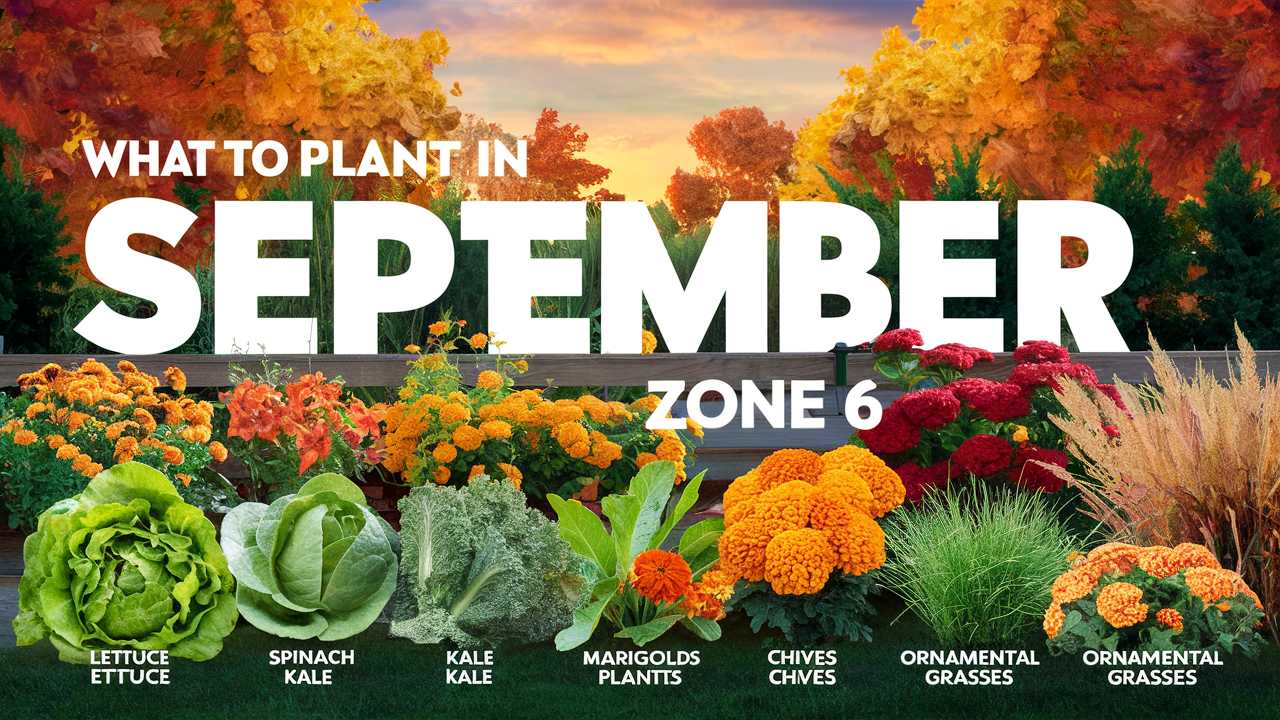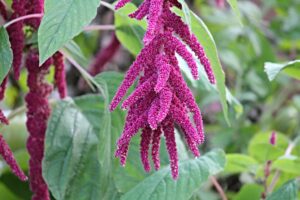This guide covers the best vegetables, flowers, herbs, and landscape plants that can be sown in September specific to Zone 6, detailing each plant’s characteristics, growing conditions, and care requirements.
Vegetables To Plant
Planting vegetables in September can yield a late-season harvest or lay the groundwork for a fruitful start in the spring. Zone 6 offers a moderately cool climate suited for a range of crops.
Broccoli

Broccoli is a cold-tolerant vegetable that thrives in the cooler temperatures of late summer and early fall. Ideal planting time in Zone 6 is late August to early September. It prefers temperatures between 60°F and 70°F for optimal growth. When planted at this time, broccoli can be harvested in late fall or early winter if protected from frost.
Key Care Tips:
Soil Requirements: Well-draining soil rich in organic matter.
Spacing: Each plant should be spaced about 18 inches apart to allow for growth.
Pest Management: Watch for aphids and cabbage worms. Using row covers can help protect young plants.
Spinach

Spinach is another excellent candidate for September sowing. This leafy green thrives in cooler conditions and can even endure light frosts. Plant spinach seeds about ¼ to ½ inch deep, aiming to sow by mid-September to ensure a harvest before heavy frost arrives.
Key Care Tips:
Soil Requirements: Spinach prefers fertile, well-drained soil with a pH of 6.0 to 7.0.
Watering Needs: Regular watering is essential to prevent bolting.
Harvesting: Spinach can be harvested continually; cut off outer leaves and allow inner leaves to grow.
Carrots

Carrots are perfect for fall planting in September, as they require a cool growing season to develop sweetness. If sown in early September, they can be dug up until the ground freezes. Carrots can withstand temperatures down to 20°F with good protection.
Key Care Tips:
Soil Requirements: Loose, sandy loam soils encourage proper root development.
Spacing: Seeds should be scattered about 1 inch apart and covered lightly with soil.
Weed Management: Keep the area weed-free, as carrots can be outcompeted by vigorous weeds.
Garlic
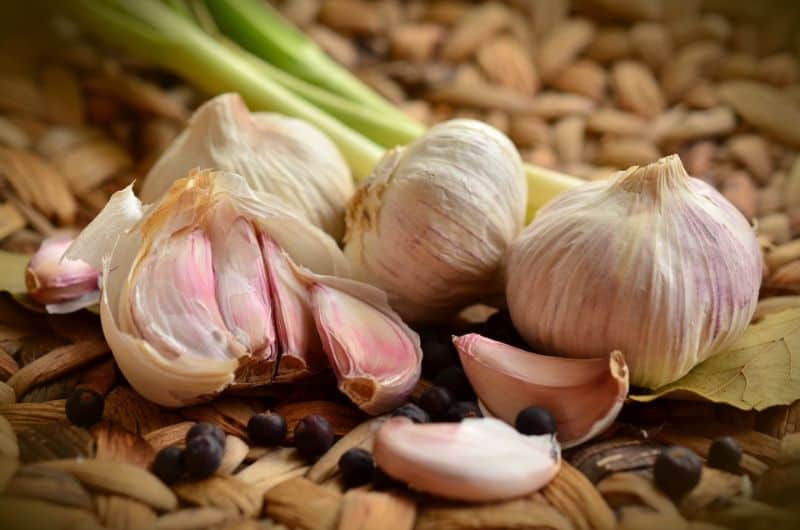
Although garlic is traditionally planted in the fall, starting it in September gives it a head start. Bulbs should be planted as soon as possible to promote healthy root development before winter. Garlic is tolerant to cold, thriving best in zone 6.
Key Care Tips:
Soil Requirements: Well-drained soil with plenty of organic matter.
Sunlight Requirements: Choose a location that receives full sun.
Mulching: Apply mulch after planting to protect from extreme cold and retain moisture.
Radishes

Radishes are a quick-growing crop, making them ideal for September planting. Ideal for cool-weather, they can be harvested in as little as three weeks. Plant radish seeds about ½ inch deep and spaced close together, aiming to sow before mid-September.
Key Care Tips:
Soil Requirements: Loose, loamy soil that drains well is ideal.
Watering Needs: Regular moisture is key; however, avoid overwatering.
Pest Management: Radishes can attract pests like flea beetles. Use row covers if necessary.
Lettuce

Lettuce is another fast-growing leafy vegetable that performs well in the cooler temperatures of fall. For Zone 6, seed lettuce in early September for a bountiful harvest in late fall. Many varieties, such as butterhead and Romaine, can tolerate light frosts.
Key Care Tips:
Soil Requirements: Prefers fertile, well-drained soil with a pH between 6.0 and 6.8.
Watering Needs: Consistent watering is essential for optimal growth.
Harvesting: Harvest outer leaves as needed or cut the whole head for a quick meal.
Beets
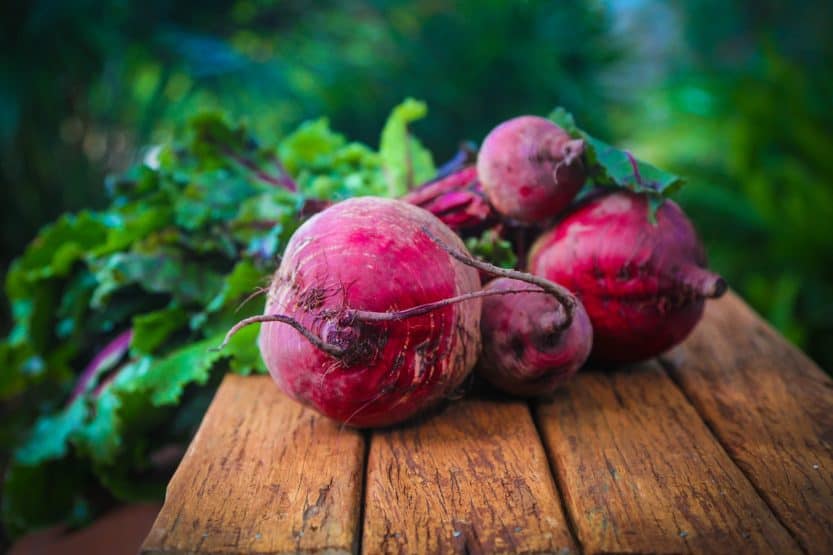
Beets can be sown in mid to late September in Zone 6. This hardy root vegetable is adaptable and thrives in cooler weather, sweetening up with frost exposure. Plant seeds about ½ inch deep.
Key Care Tips:
Soil Requirements: Deep, well-drained, loamy soil is best for beet growth.
Spacing: Thin seedlings to about 3 inches apart for better root development.
Timing: Be mindful not to plant too late, as beets require time to mature before frost.
Kale
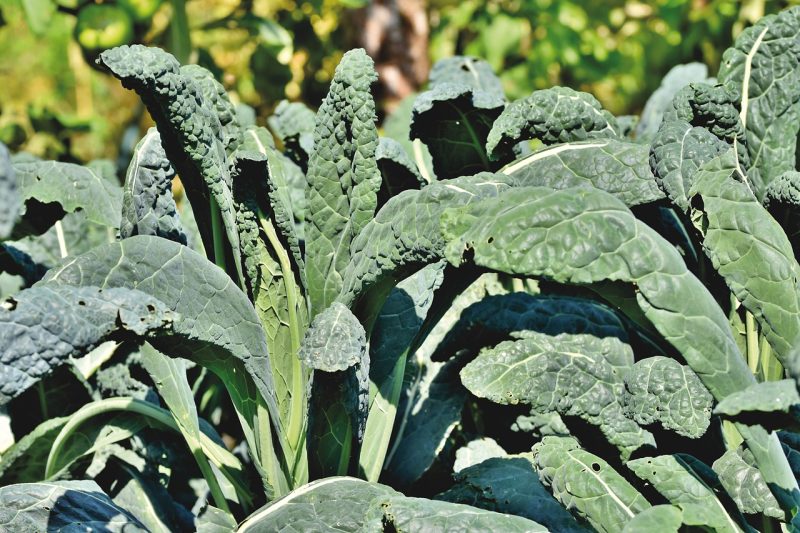
Kale is a superfood that thrives in cooler weather. Its growing season extends well into the fall, making it suitable for September planting. Cold temperatures can even enhance its flavor, making it sweeter after a frost.
Key Care Tips:
Soil Requirements: Loose, nutrient-rich soil with a pH of 6.0–7.0.
Watering Needs: Consistent watering helps to retain moisture in the soil.
Harvesting: Kale leaves can be harvested continuously from the outside, allowing inner leaves to grow.
Turnips
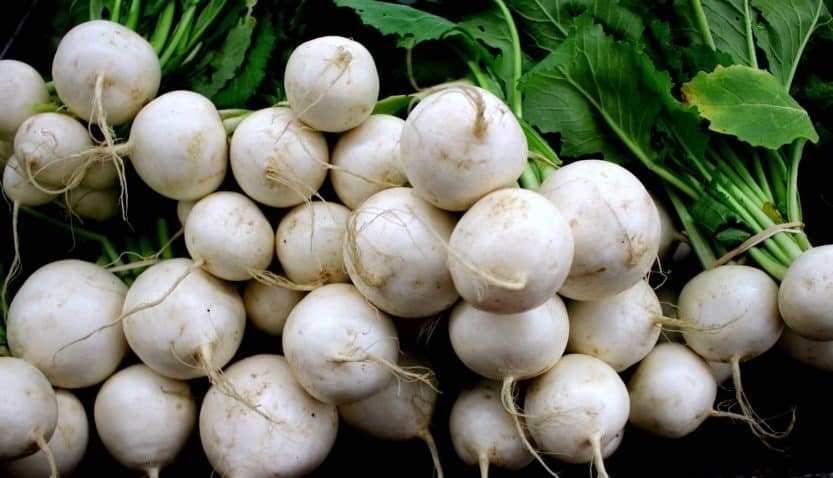
Turnips are another biennial root vegetable that does well in the cooler months. Plant seeds in September, and they can be harvested within 60 days. They are cold-hardy and can handle frost, enhancing their flavor.
Key Care Tips:
Soil Requirements: Well-draining, loamy soil enriched with compost.
Spacing: Seeds should be sown ½ inch apart and thinned to 3-4 inches apart as they grow.
Pest Management: Watch for root maggots; rotating crops can help mitigate this issue.
Swiss Chard

Swiss chard is a versatile vegetable that can handle cooler conditions, making it a perfect addition to early fall gardens. Sown in September, it can produce leaves until frost. It is a biennial plant, and while often grown as an annual, it can overwinter in milder climates.
Key Care Tips:
Soil Requirements: Rich, well-draining soil is ideal for optimal growth.
Watering Needs: Regular watering ensures healthy leaf development.
Harvesting: Leaves can be harvested from the outside as needed.
Flowers To Plant
As the days grow shorter, September presents an excellent opportunity to plant fall-blooming flowers that can continue to create beauty in your garden. These flowers not only thrive but also add richness and color to fall landscapes.
Asters
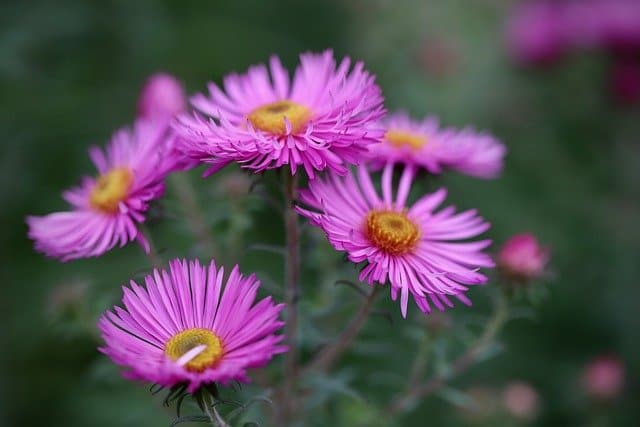
Asters are vibrant, perennial flowers that bloom in various colors, from blue to pink. Planting asters in September allows them to establish roots before the winter. They are hardy and can tolerate light frost, making them an excellent choice for fall gardens.
Key Care Tips:
Soil Requirements: Prefers well-drained, moist soils with a neutral pH.
Sunlight Requirements: Full sunlight is necessary for optimal blooming.
Spacing: Space plants 1-2 feet apart to allow for growth.
Pansies

Pansies are known for their bright, cheerful flowers and can withstand cooler temperatures, making them perfect for September planting in Zone 6. They can bloom until the first frost and may even return in the spring.
Key Care Tips:
Soil Requirements: Pansies thrive in rich, well-drained soil.
Watering Needs: Regular watering is essential, especially during dry spells.
Fertilization: Use a balanced fertilizer to encourage continuous blooming.
Chrysanthemums (Mums)
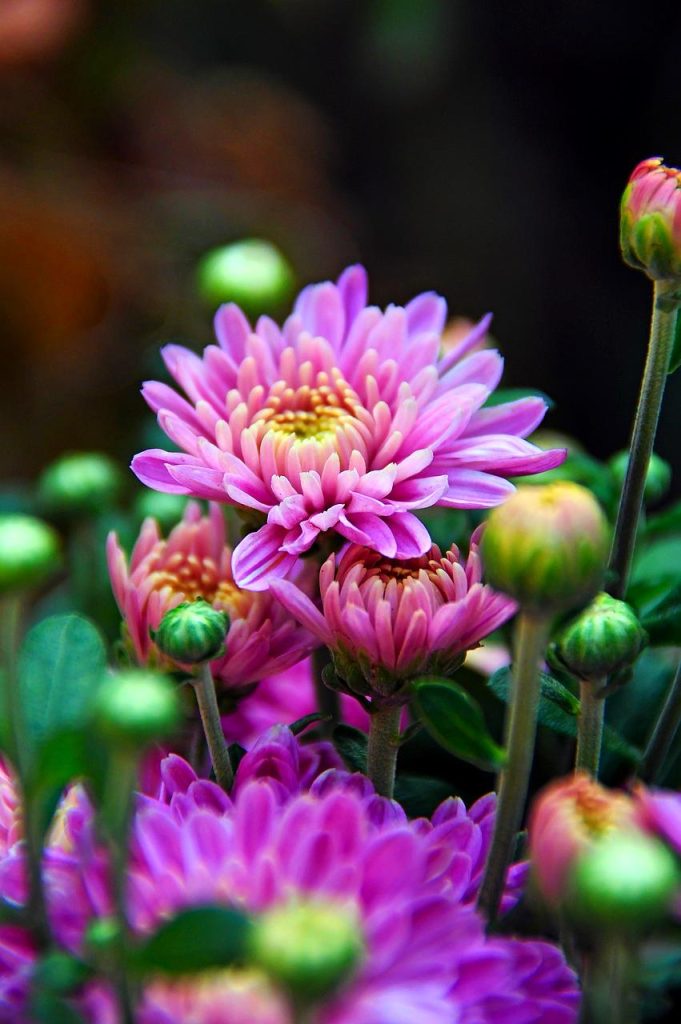
Chrysanthemums are iconic fall flowers that come in many varieties, colors, and sizes. Planting in September allows them to establish roots and enhance your fall landscape with vibrant flowers right before the first frost.
Key Care Tips:
Soil Requirements: Rich, well-drained soil is ideal for mum growth.
Sunlight Requirements: These flowers love full sun for at least 6 hours a day.
Pruning: Pinching back the stems helps promote bushier plants and more blooms.
Sedum

Sedum, particularly the autumn-blooming varieties, are hardy perennial flowers that add color to any fall garden. Planting them in September allows for root establishment before winter sets in.
Key Care Tips:
Soil Requirements: Well-draining, sandy soil is preferred.
Sunlight Requirements: Full sun is required for optimal growth and blooming.
Drought Resistance: Sedum is drought-tolerant, making it low maintenance.
Ornamental Kale
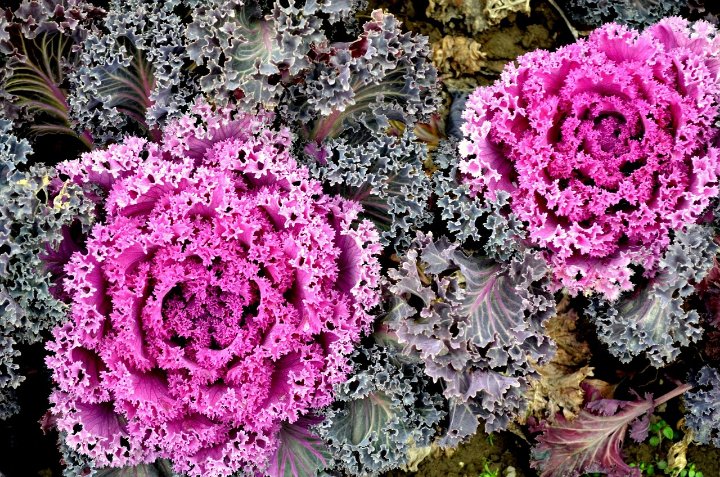
Ornamental kale boasts colorful, frilled leaves, making it an ideal fall plant. These plants are cold-tolerant and can thrive even through early winter.
Key Care Tips:
Soil Requirements: Fertile, well-drained soil is best.
Sunlight Requirements: Full sunlight is preferred for the brightest leaf colors.
Watering Needs: Regular watering is vital for vibrant growth.
Helianthus (Sunflowers)
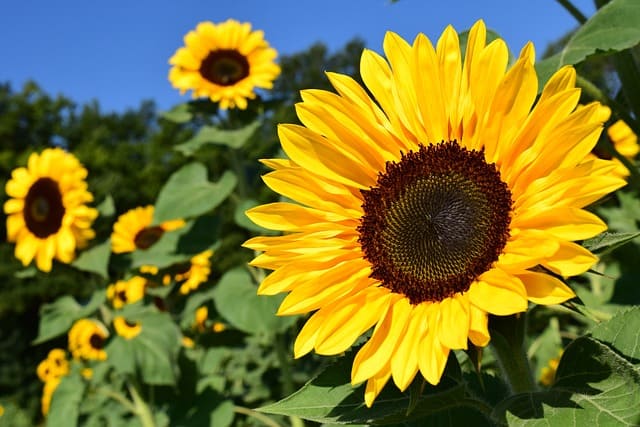
Late-blooming varieties of sunflowers can still be planted in September in Zone 6. With their strong stalks and bright blossoms, sunflowers add charm to any garden, and they attract pollinators.
Key Care Tips:
Soil Requirements: These flowers prefer loamy, well-drained soil.
Sunlight Requirements: Full sun is necessary for optimal growth.
Fertilization: A balanced fertilizer will promote strong growth.
Acalypha (Chenille Plant)
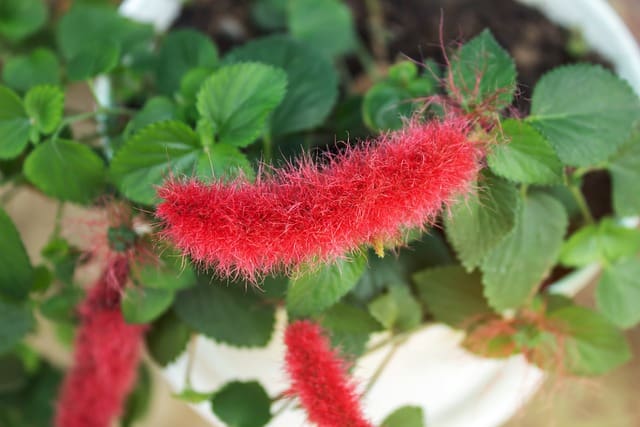
The chenille plant or acalypha produces fuzzy, caterpillar-like flowers that can brighten fall gardens. This plant is especially appealing in warmer areas and can take mild frost well, ensuring late-season color.
Key Care Tips:
Soil Requirements: Prefers well-drained, nutrient-rich soil.
Sunlight Requirements: Full sun to partial shade can improve flowering.
Pruning: Regular pruning can help maintain shape and promote bushiness.
Verbena
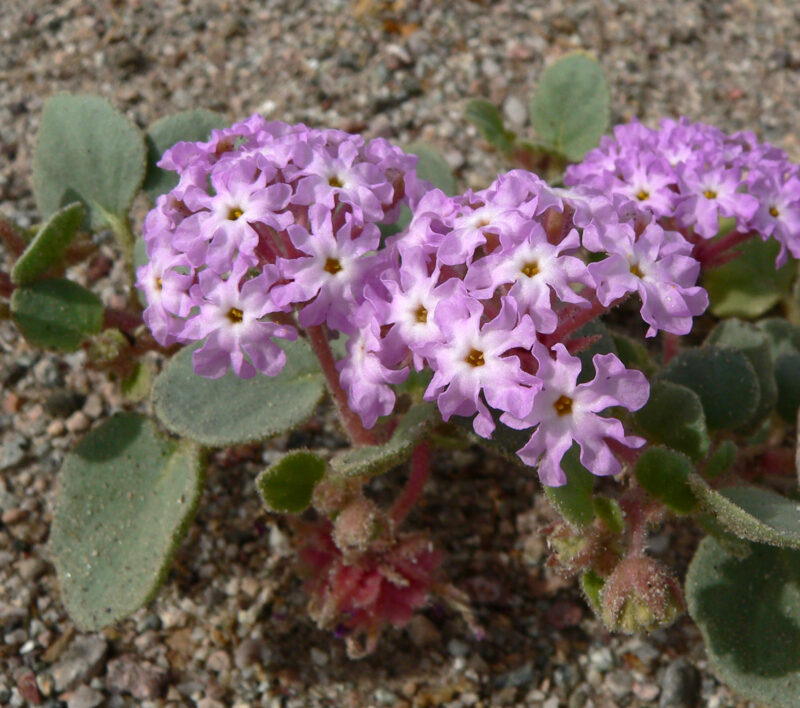
Verbena is a prolific bloomer providing color until frost. They are resilient and can thrive when planted in September, blooming profusely through the cooler months.
Key Care Tips:
Soil Requirements: Well-drained, sandy loam is ideal.
Sunlight Requirements: Full sun exposure is necessary for healthy blooms.
Water Requirements: Keep the soil consistently moist but never flooded.
Fall-Blooming Crocus
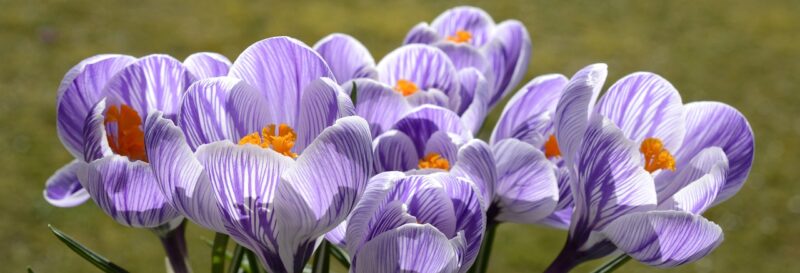
Fall-blooming crocus adds a delightful pop of color in late September. These bulbs can be planted in early to mid-September and will begin flowering in the fall.
Key Care Tips:
Soil Requirements: Well-drained soil is critical to prevent bulb rot.
Sunlight Requirements: Full sun to partial shade is ideal for best growth.
Timing: Plant bulbs about 3-4 inches deep for optimal blooming.
Helenium

Also known as sneezeweed, Helenium is a perennial flower that blooms in the fall, offering vibrant colors. Plant this beauty in September to ensure a robust display.
Key Care Tips:
Soil Requirements: Well-draining, fertile soil is essential.
Sunlight Requirements: Full sun is required for best growth and blooming.
Maintenance: Deadhead the flowers to promote additional blooming throughout the season.
Herbs To Plant
Herbs thrive in the cooler temperatures of September, providing fresh flavors for culinary use and adding aromatic appeal to gardens.
Chives
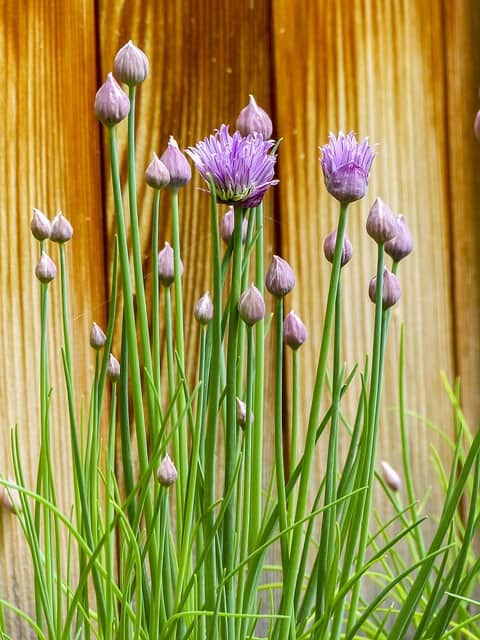
Chives are hardy perennials that can still be planted in early September for a bountiful harvest. They are incredibly versatile, able to grow in various environments and even thrive in colder temperatures.
Key Care Tips:
Soil Requirements: Prefers fertile, well-drained soil.
Sunlight Requirements: Full sun is best for optimal leaf production.
Companion Planting: Chives can help deter aphids when planted near roses.
Cilantro

Cilantro prefers cooler temperatures, so sowing seeds in September is ideal. While it bolts in hot weather, it performs beautifully through the fall.
Key Care Tips:
Soil Requirements: Well-drained, loamy soil is required.
Watering Needs: Regular watering is crucial to maintain consistent growth.
Harvesting: Harvest leaves before they start to bolt for the best flavor.
Oregano

Oregano is a perennial herb that thrives in warm, sunny conditions but can be planted in September in Zone 6. This hardy plant can survive winter, making it a favorite among perennial herb gardeners.
Key Care Tips:
Soil Requirements: Well-drained, sandy soil enhances growth.
Sunlight Requirements: Full sun ensures flavorful leaves.
Pruning: Trim back stems to promote bushier growth.
Thyme
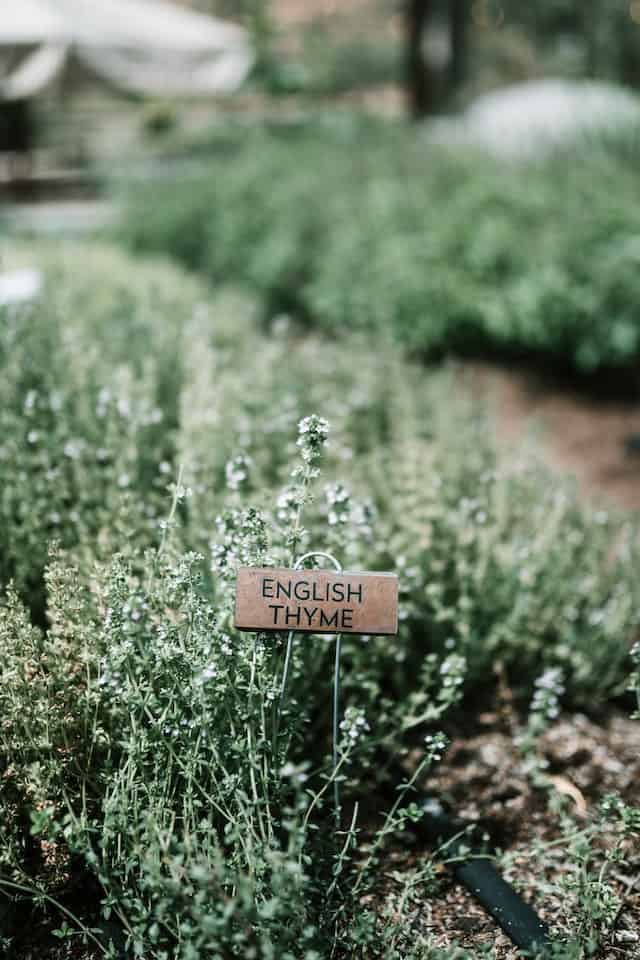
Thyme is another perennial herb that can be planted in September. Hardy and tough, thyme can withstand frost and continue growing well into fall and winter.
Key Care Tips:
Soil Requirements: Well-drained, sandy soil is best.
Sunlight Requirements: Full sun to partial shade is ideal for growth.
Drought Resistance: Once established, thyme is drought-tolerant.
Parsley

Although typically grown as an annual, parsley is a biennial and can be successfully sown in September. It thrives in cooler temperatures and can remain alive through the winter, resuming growth in spring.
Key Care Tips:
Soil Requirements: Prefers rich, well-drained soil.
Sunlight Requirements: Grow in full sun or partial shade.
Watering Needs: Keep soil consistently moist.
Dill
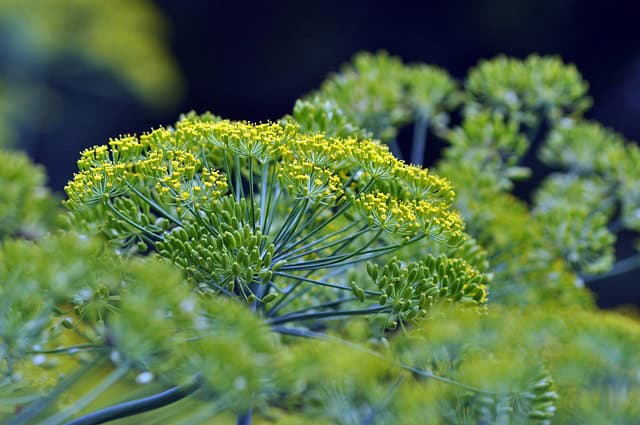
Dill is a hardy herb that can be sown in September, with a preference for cooler climates. It grows rapidly and is used for flavoring, preservation, and garnishes.
Key Care Tips:
Soil Requirements: Well-drained, rich soil with a pH of 6.0-7.0.
Sunlight Requirements: Full sun is necessary.
Harvesting: Snip outer fronds to encourage new growth.
Sage

Though typically considered a summer herb, sage can still be planted in Zone 6 during September. This herb can withstand cooler temperatures and can last through winter with the right care.
Key Care Tips:
Soil Requirements: Well-drained, sandy soil suits sage.
Sunlight Requirements: Full sun promotes robust growth.
Watering Needs: Sage prefers drier conditions; over-watering can lead to rot.
Mint
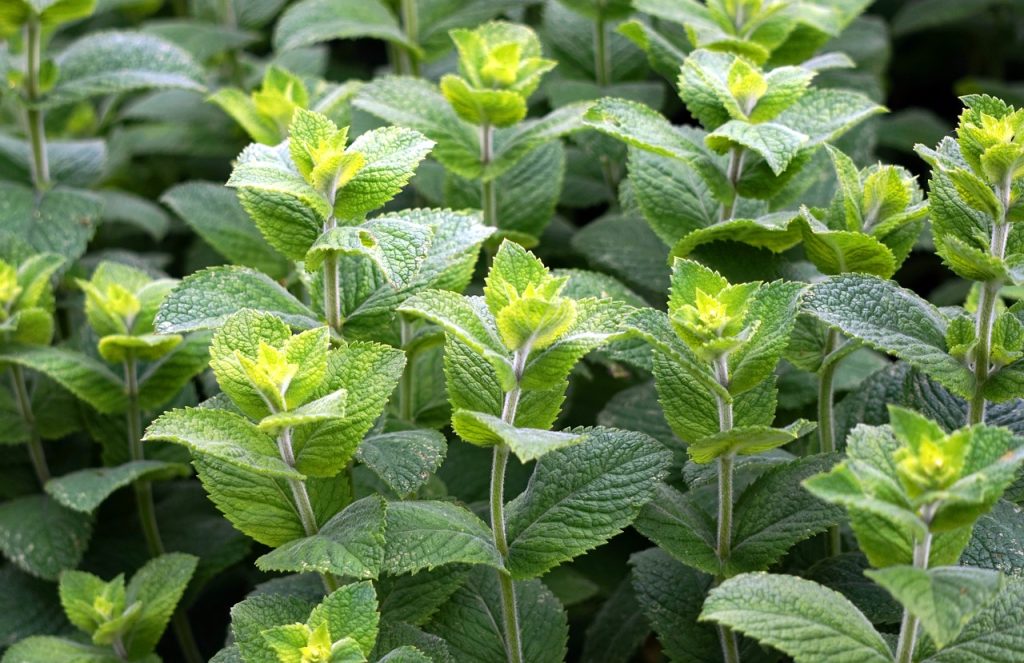
Mint is a hardy perennial herb that thrives in cooler weather. Planting in September allows it to establish roots before the winter dormant period.
Key Care Tips:
Soil Requirements: Prefers rich, moist soil but can tolerate a range of conditions.
Sunlight Requirements: Full sun or partial shade is suitable.
Containment: Mint spreads quickly; consider planting in pots to control growth.
Fennel
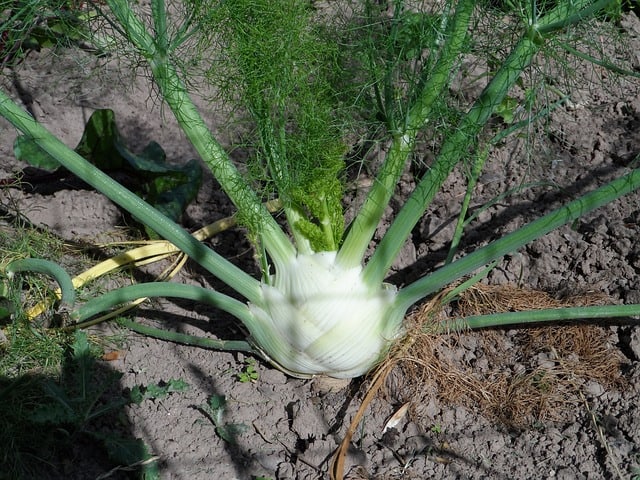
Fennel can be planted in September, thriving in cool weather for flavorful stalks and fronds. Make sure to choose the bulb or herb variety based on your culinary needs.
Key Care Tips:
Soil Requirements: Well-draining, fertile soil is ideal.
Sunlight Requirements: Full sun is necessary for optimal growth.
Harvesting: Snip leaves as needed for fresh use; bulbs can be harvested when they reach a good size.
Basil
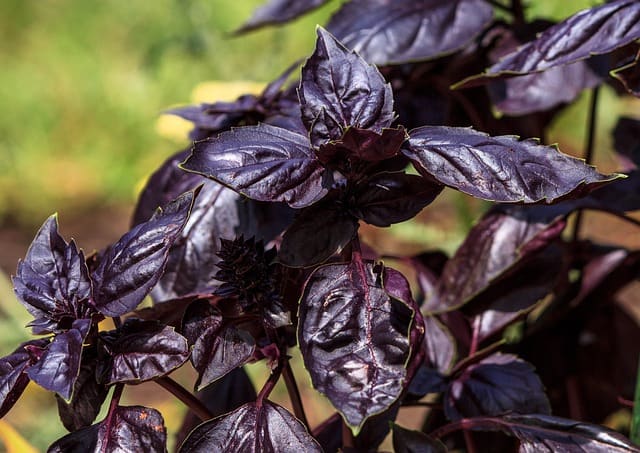
While basil is usually grown in summer, in warmer years, a late September planting can yield flavorful leaves before frost. However, keep in mind that basil is less frost-tolerant than many herbs.
Key Care Tips:
Soil Requirements: Rich, well-drained soil is preferred.
Sunlight Requirements: Full sun is essential for optimum growth.
Frost Protection: Use row covers or containers that can be moved indoors if frost is expected.
Landscape Plants To Plant
In September, your landscape can be beautified and future-proofed by planting certain hardy plants. These selections endure the cold and add elegance and dimension to your outdoor space.
Perennial Grasses
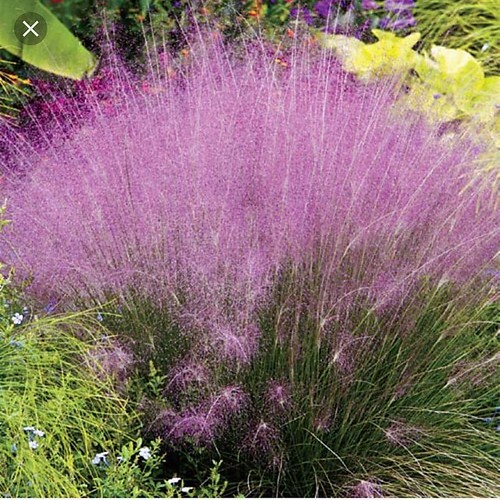
Planting perennial grasses in September allows them to establish roots before winter. These grasses provide texture and movement to the landscape and can withstand cold temperatures.
Key Care Tips:
Soil Requirements: Adaptable to a variety of soil types, but well-drained is preferred.
Sunlight Requirements: Most prefer full sun, though some tolerate partial shade.
Maintenance: Minimal maintenance is needed once established.
Peonies
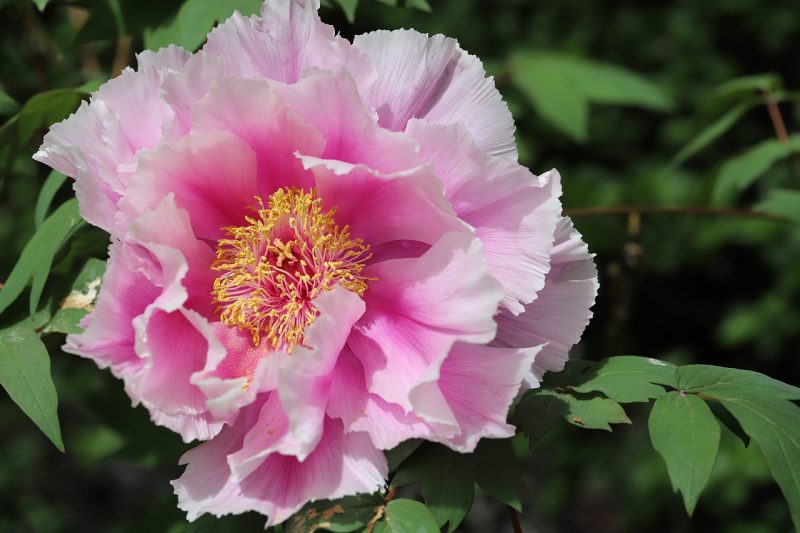
Peonies are renowned for their breathtaking blooms. Planting in the fall allows for root establishment ahead of winter. They are hardy and can withstand the temperatures of Zone 6.
Key Care Tips:
Soil Requirements: Prefers well-drained, fertile soil.
Sunlight Requirements: Full sun provides the healthiest plants and blooms.
Maintenance: Remove spent flowers to enhance future flowering.
Lavender
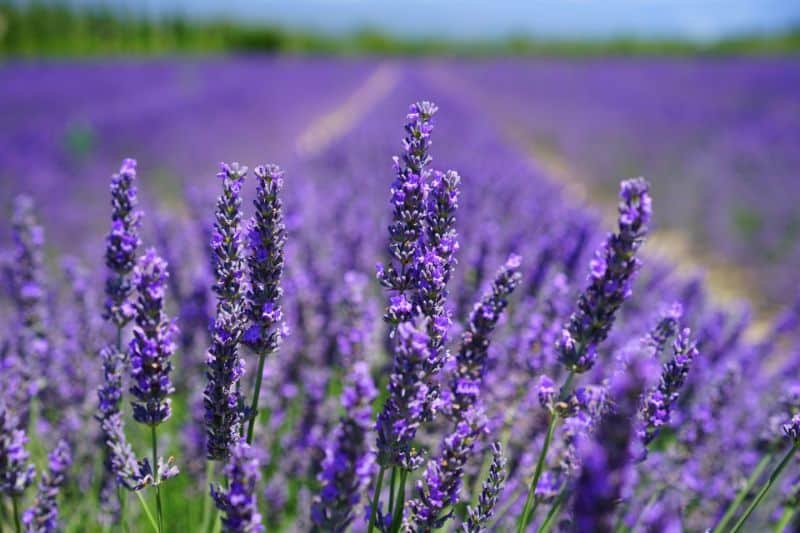
Lavender is a perennial plant that thrives in Zone 6 and is ideally planted in early fall. Its fragrant blooms are a delight for both gardeners and pollinators alike.
Key Care Tips:
Soil Requirements: Sandy, well-drained soil is necessary.
Sunlight Requirements: Full sun exposure is crucial for growth.
Watering Needs: Requires dry conditions; overwatering can be detrimental.
Sedum
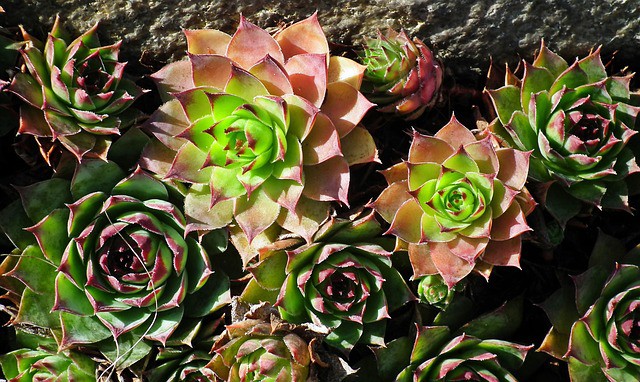
As mentioned before, certain varieties of sedum can be planted in September. These hardy perennials add color and interest to landscapes while being low-maintenance.
Key Care Tips:
Soil Requirements: Prefers well-drained, sandy soil.
Sunlight Requirements: Full sun is necessary for vibrant growth.
Drought Resistance: Sedum thrives under drought conditions.
Spirea
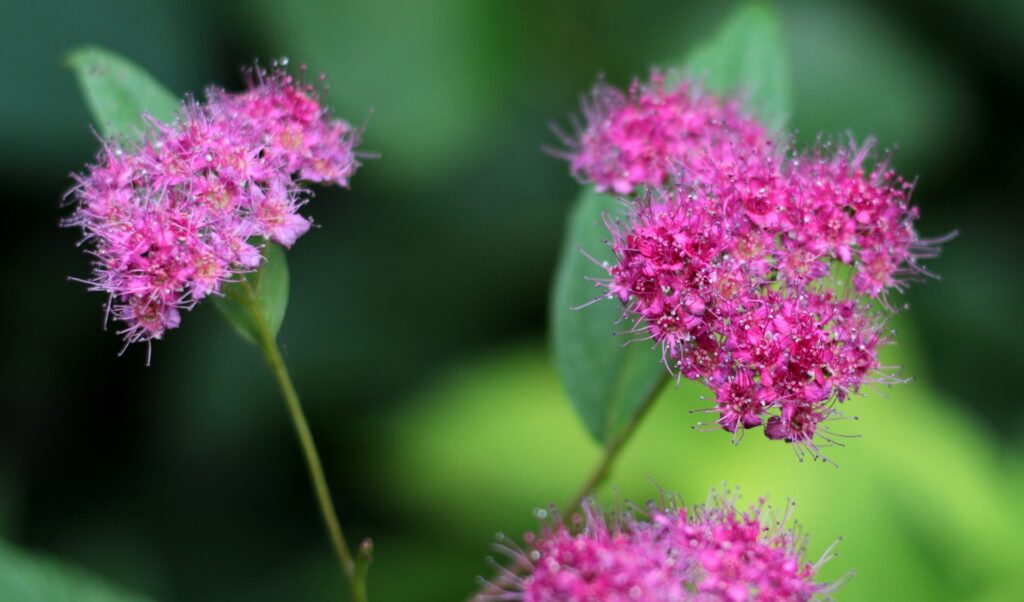
Late summer to early fall is the ideal time to plant spirea, a hardy shrub that blooms beautifully in the spring. Planting in September allows sufficient time for root establishment.
Key Care Tips:
Soil Requirements: Well-drained soil is essential.
Sunlight Requirements: Full sun or partial shade can both yield good results.
Pruning: Regular pruning promotes bushier plants and encourages blooming.
Hellebore
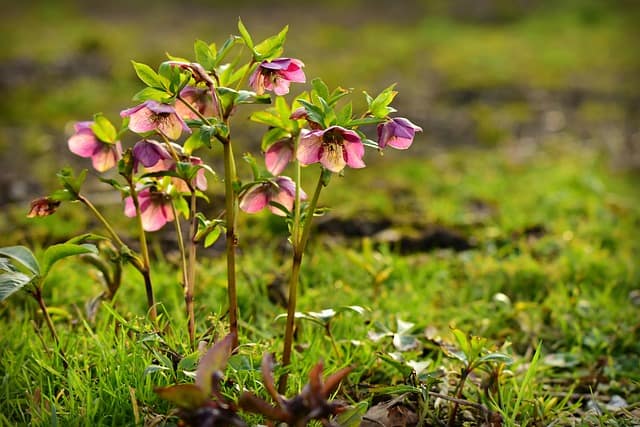
Known for their resilience, hellebores can be planted in September in Zone 6. These shade-tolerant perennials offer unique flowers early in the springtime.
Key Care Tips:
Soil Requirements: Rich, well-drained soil is ideal.
Sunlight Requirements: Prefers partial shade for best growth.
Maintenance: Minimal; remove old foliage in spring to promote new growth.
Hydrangea

Hydrangeas are beautiful flowering shrubs that can also be planted in September. These multi-season bloomers thrive in various conditions, making them suitable for many gardens.
Key Care Tips:
Soil Requirements: Rich, well-drained soil is essential.
Sunlight Requirements: Full sun to partial shade, depending on the variety.
Watering Needs: Regular watering is critical, especially in dry periods.
Coneflower (Echinacea)
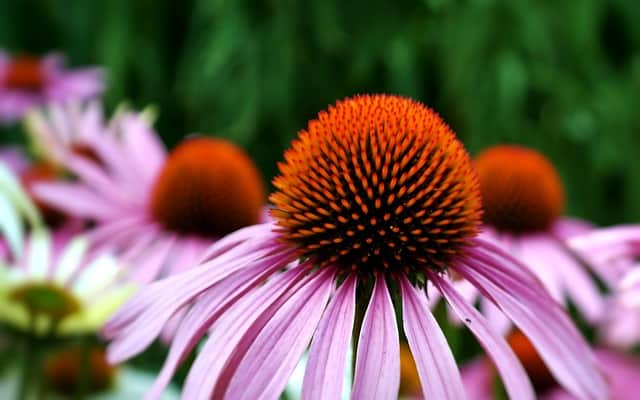
Coneflowers are robust perennials that produce vibrant blooms attracting pollinators. September planting allows for root establishment before the chill of winter.
Key Care Tips:
Soil Requirements: Tolerates poorer soil but prefers well-draining conditions.
Sunlight Requirements: Full sun is necessary for optimal blooming.
Drought Resistant: Once established, coneflowers require less water.
Astrantia
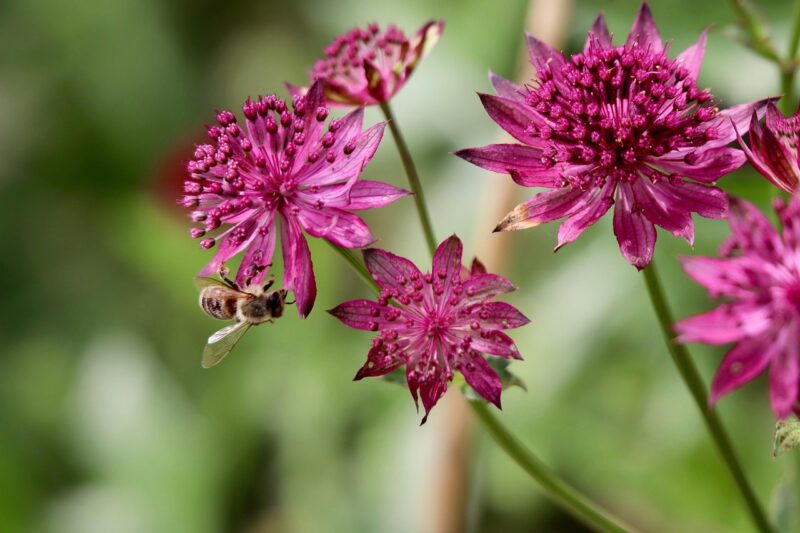
Astrantia, often referred to as masterwort, provides delicate flowers and is perfect for shady areas. Planting in September helps establish roots and enjoy blooms in early summer.
Key Care Tips:
Soil Requirements: Moist, well-drained soil with plenty of organic matter is preferred.
Sunlight Requirements: Prefers partial to full shade for ideal growth.
Maintenance: Cut back spent blooms to prolong flowering.
Coral Bells (Heuchera)
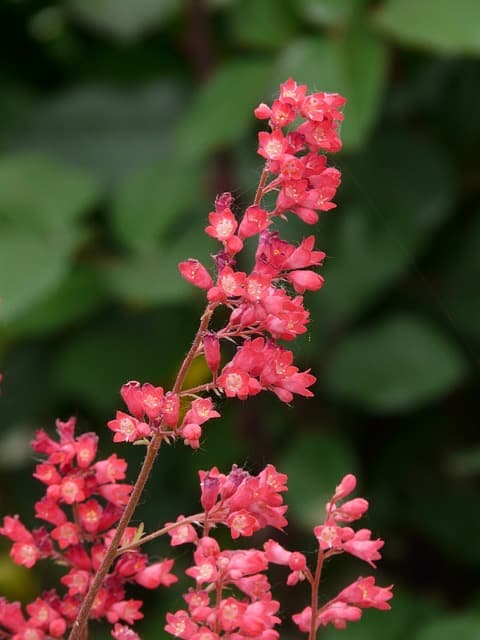
Coral bells are hardy perennials known for their beautiful foliage and petite flowers that attract hummingbirds. Planting in September helps them establish roots before winter.
Key Care Tips:
Soil Requirements: Rich, well-drained soil is ideal for coral bells.
Sunlight Requirements: Full sun to partial shade is acceptable.
Companion Planting: Pairs well with other perennials for vibrant garden beds.
Astilbe
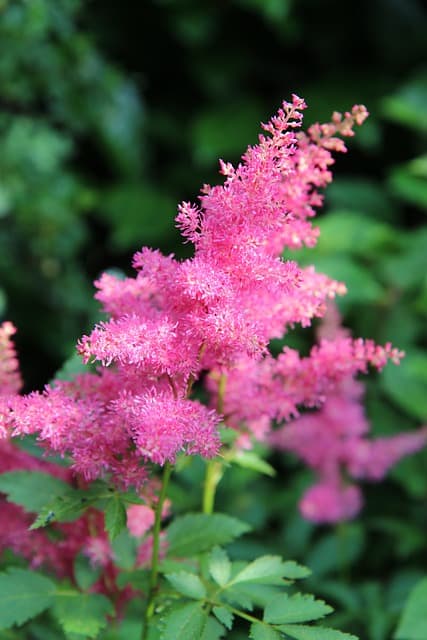
Astilbe adds beauty and texture to shady parts of the garden. Planting in September allows it to settle in before winter and ensures that it blooms spectacularly in the spring.
Key Care Tips:
Soil Requirements: Prefers moist, rich soils with good drainage.
Sunlight Requirements: Thrives in partial to full shade.
Watering Needs: Requires consistent moisture for optimal growth.


